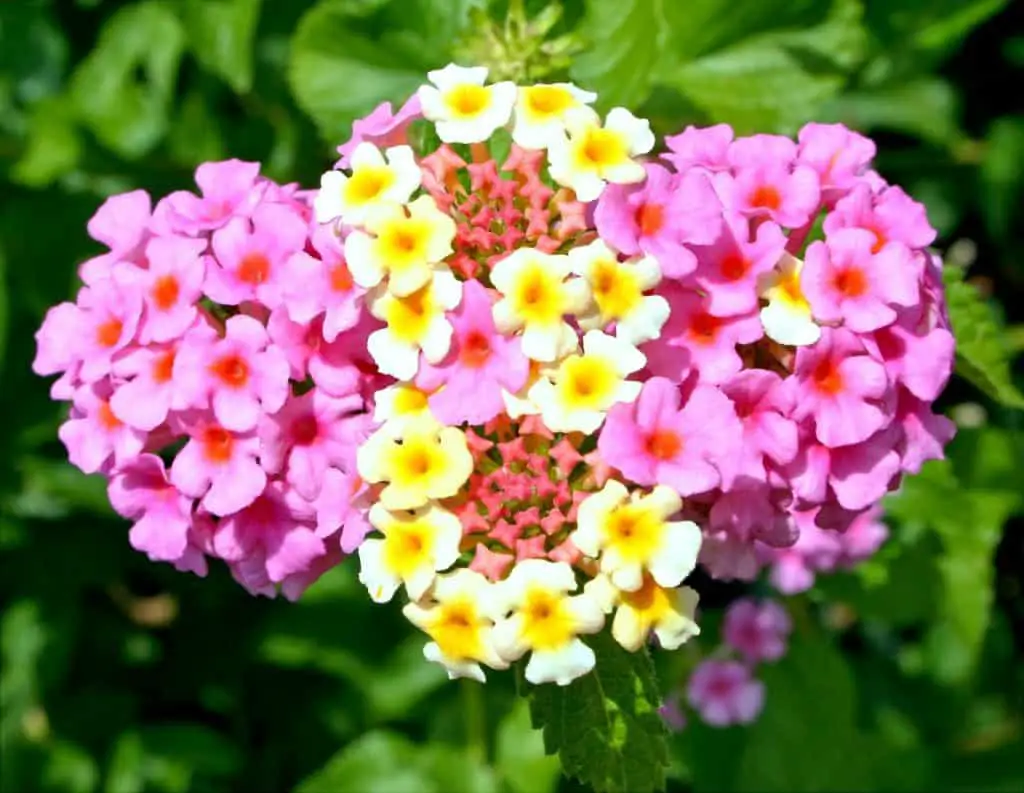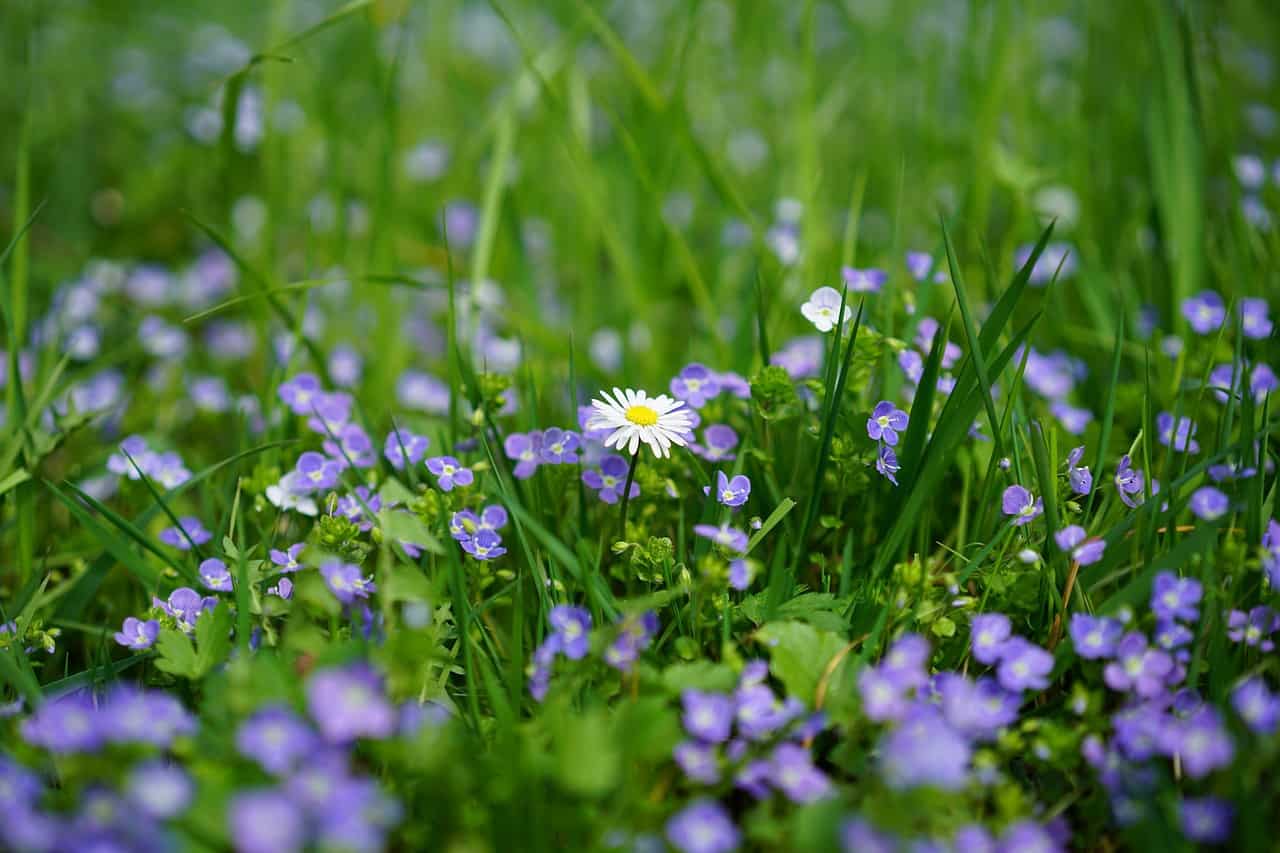Flowers come in a variety of sizes and shapes. Ranging from small flowers to big ones.
However, I believe that language is still insufficient to convey the fantastic world of small flowers.
Each flower is a tiny marvel on its own, and it’s next to impossible to determine which are the most beautiful.
By default, classic small flowers such as calla lilies, orchids, and gerberas, are often believed to be the most beautiful globally. While it is correct that they are one of the most appealing ones. I’ve tried to move forward and highlight some less obvious examples of stunning flowers that are also environmentally friendly.
Here are some of the most beautiful small flowers you can cultivate in your garden.
Table of Contents
- 1 1. Digitalis purpurea: Foxglove
- 2 2. Helianthus annuus: Sunflower
- 3 3. Carnation (Dianthus) as small flowers
- 4 4. French Hydrangea also known as Hortensia
- 5 5. Lantana as small flowers
- 6 6. Snapdragons (Antirrhinum)
- 7 7. Strelitzia: Bird Of Paradise
- 8 8. Lilium Orientalis ‘Stargazer’ also known as Stargazer Lily
- 9 9. Portulaca grandiflora: Moss rose – Purslane
- 10 10. Syringa vulgaris: Lilac
1. Digitalis purpurea: Foxglove
Digitalis or Foxglove is without a doubt one of the most beautiful wildflowers on the planet. Don’t you believe me? Take a look at the huge clusters of long, vibrant small flowers with a pretty dotted pattern on the interior sides of petals.
Foxglove is native to Europe, but it has also started blooming in parts of North America and other areas of temperate climates (e.g. temperate areas of Australia), and it is hardy in zones 4-8.
It’s a biennial plant that blooms in the second year of its existence. It will self-seed if you provide it with part shade and damp soil.
Beauty, on the other hand, is sometimes fatal. And the beauty of foxglove might be deadly poisonous. When indigested, this plant becomes very dangerous; therefore, it should be kept out of the reach of pets and small children.
2. Helianthus annuus: Sunflower
The sunflower whose biological name is Helianthus annuus is the manifestation of summer. This 5-12 feet tall annual flower attracts attention with its sun-shaped flower head that always faces the sun as it travels across the sky on its daily course. Heliotropism is a term for this unusual characteristic.
The Sunflower is a well-known representation of symmetry since it’s a great natural illustration of the Fibonacci Numbers and Golden Angle.
Sunflower seeds are a high-calorie food source for both people and animals. Sunflower seed oil, which is high in vitamin E, is commonly used in the culinary and cosmetic industries. Sunflowers will draw a variety of birds, bees, and songbirds to your garden if you plant them in the spring. The vibrant yellow pollen and rich nectar will attract both butterflies and pollinators to your garden, while the sunflower seeds will provide food for hungry songbirds.
Sunflowers are a great addition to the garden for their brilliant blooms, which can be grown in several colors and shapes. Just ensure that you opt for an ornamental variety when planting sunflowers because agricultural types are chosen for their large yield and are not as beautiful. Wild-type sunflowers are also a fantastic option for your backyard.
3. Carnation (Dianthus) as small flowers
In a bizarre Yugoslav comedy-horror film Strangler vs. Strangler, the main character – a flower street vendor with a homicidal streak – emphasizes: “The one who doesn’t love carnations should not live!”
Perhaps that was a bit far-fetched, but carnations indeed have much to commend them.
The small flowers of the Rose family feature irregularly shaped petals that are wonderfully smooth to the touch and come in a variety of bright, pastel colors (there are variegated cultivars as well). The fragrance of the blooms is heavenly delicious. They’re easy to grow, don’t require much maintenance, and can be grown almost everywhere. They come on a long straight stem, which has only aided in making them a classic cut flower. It’s no surprise that their family name, Dianthus, means “flower of the gods.”
Make sure the area receives 4-5 hours of sunlight per day, has good air circulation and well-draining, mulch free-soil, and is free from weeds before planting seeds or young plants outside.
4. French Hydrangea also known as Hortensia
Flower clusters are beautiful on their own. But consider a flower cluster with lowers of various hues and tones of the same color family. What an amazing sight that would be.
All you have to do is look at the French Hydrangea for proof.
This shrub is also known as the Florist’s Hydrangea or Hortensia, and it is native to Japan. It is bushy with pale green leaves that go well with the flowerheads’ colors.
The French Hydrangea is among the most stunning plants for darker gardens. It thrives in shade and is therefore well suited to northern gardens. It prefers wet, loamy, but well-draining soil.
It requires protection from harsh winds, so a sheltered location is ideal for this plant.
There are a variety of alternative hydrangeas that are well worth looking into.
5. Lantana as small flowers
Lantana is notable for its colorful flower cluster. The tiny flowers are red, orange, or white with a few being pink, blue, or purple. They may also be mixed in a variety of ways (e.g., purple-pink-yellow).
Lantana is a hardy and bushy plant that grows well in any type of soil. It may be annual or perineal depending on the weather. Its size will be determined by the growing conditions and variety, so lantanas can be used as a shrub or ground cover.
Lantana, with its bold variegated leaves and stunning flower heads, is both beautiful and useful. It’s a favorite nectar source for butterflies. It also serves as an excellent butterfly attractant, adding further delight to your garden.

6. Snapdragons (Antirrhinum)
This flower’s name is derived from the shape of its bloom, which resembles a mouth. And a big one! The “mouth” will open when you spread it out. It will reveal the white interior and a thick lower yellow “lip.” Also, when you open and close it, there may be a little snap sound.
The common snapping dragon is found in rocky regions of Europe and North America. Antirrhinum majus is the most popular cultivated species, which has been in cultivation in the Mediterranean region, since the 15th century
The flowers are stacked in an inflorescence that points up, and they may be red, yellow, pink, white, or orange. The entire plant is tall and well-proportioned.
The oddity of snapdragons does not stop there. Its seed pod resembles a tiny skull when viewed from the bottom. As a result, the seed pods have been the subject of numerous myths in Europe.
Only bumblebees can open the flower, but snapdragons are a great source of food for pollinators.
7. Strelitzia: Bird Of Paradise
The Bird of Paradise is a stunning tropical flower that resembles a multi-colored bird, such as a bird of paradise species. Strelitzia is an indigenous South African plant like many other strange and lovely endemic plants. Strelitzia reginae and Strelitzia Nicolai are the two species of the genus that are most often grown as houseplants.
It’s this plant on this list that cannot withstand garden temperatures in the temperate zone. S. reginae, a tropical species, cannot endure temperatures below 50°F (10°C).
It thrives in the sun, behind glass, in a glasshouse or conservatory, as numerous other tropical plants do. During the summer months, it can be grown outside.
Otherwise, the plant is low-maintenance, adaptable to soil conditions, and only requires modest watering once planted. If the plant is fertilized at a slow-releasing rate and/or compost properly, it may bloom many times each year, with peak flowering occurring in winter and early spring.
8. Lilium Orientalis ‘Stargazer’ also known as Stargazer Lily
Lilies are the most beautiful flowers available. However, out of all the cultivars, one stands out in particular. The Stargazer lily is a hybrid between Lilium speciosum and Lilium auratum, making it an oriental lily variety. It was designed 45 years ago with the goal of developing a lily that produced an upward-facing blossom.
The lily’s unusual, almost reptilian petals inspired the name. It has a rare sweetness, and it is quite fragrant. It blooms in summer and lasts for a long time, typically between six and ten weeks before fading.
The delicate flower is one of the most gorgeous in the world and has a frequent cut bloom. The sheer volume of the bloom, tints, and specks make it one of the most beautiful flowers in the world, as well as a favorite floral decoration.
In the garden, this bulbous perennial is simple to maintain. Despite their towering stature (4 feet), they don’t require staking (unlike many lilies). They’re ideal for planting in the middle or back rows.
9. Portulaca grandiflora: Moss rose – Purslane
Succulents may have beautiful blooms, which is a significant difference from most plants. Succulents are also known for having fascinating vegetative features.
Moss roses (sometimes known as purslanes) are annual plants that are rose-like, soft, have thick pointed leaves and bright blooms. They prefer sunny and rocky locations but can also be grown in a variety of hardiness zones 2 to 11. They may be established as ground cover.
10. Syringa vulgaris: Lilac
The plant, known scientifically as Symphytum x uplandicum, is a tiny tree with lovely lilac flower clusters that are usually violet but may also be white and mottled. It is native to the Balkans of southeastern Europe, although it has been naturalized in other parts of Europe and North America.
Lilacs are a May bloom that has a distinctive scent and is one of the first signs of spring.
It requires little care, and it is not picky about soil. It thrives in partial shade with frequent sunny periods.

